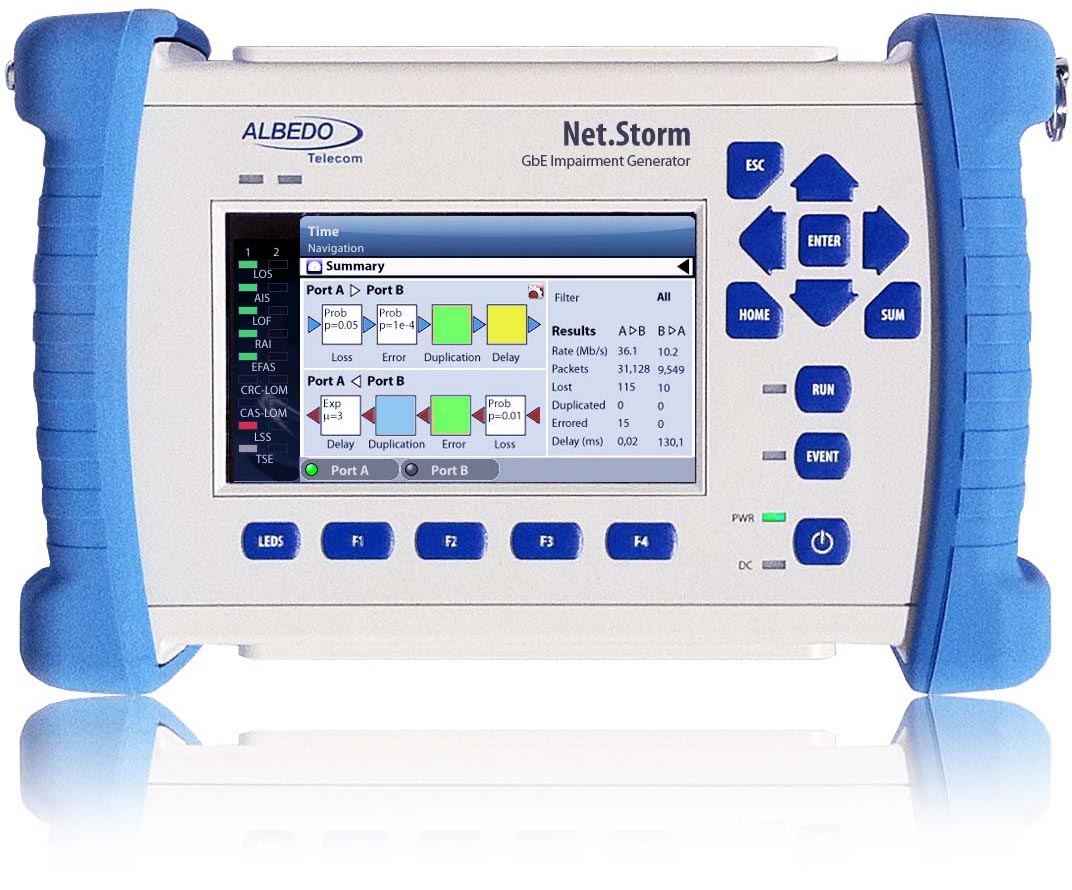WAN emulators
WAN emulators generate those perturbances typical of IP / Ethernet networks to test applications, devices and protocols that should be tolerant with packet delay, jitter, loss, duplication, reordering, error and bandwidth variations.
Miami 12.13.22
About WAN emulators
A WAN emulator is a tool that simulates the characteristics of a wide area network (WAN) in a laboratory or testing environment. It allows network administrators and developers to test how applications and services will perform over a WAN connection, without having to use an actual WAN. This can be useful for identifying and troubleshooting potential issues, such as latency and packet loss, before deploying applications and services in a real-world WAN environment.

Fig 1. Impairments generated with Net.Storm
Applications
Some real-world applications of WAN emulators include:
- Testing the performance of applications and services in a WAN environment.
- Identifying and troubleshooting potential issues with applications and services in a WAN environment.
- Evaluating the performance of different WAN technologies and configurations.
- Testing the effects of network impairments, such as latency and packet loss, on applications and services.
- Training network administrators and engineers in the use of WAN technologies and best practices.

Fig 2. Labs are top users of WAN emulators.
ALBEDO Net.Storm
NetStorm generates those perturbances typical of IP and Carrier Ethernet to test applications, devices and protocols that should be tolerant with packet delay, jitter, loss, duplication, reordering, error and bandwidth variations. Testing has become an important topic during the IP convergence, because of the diversity of underlying technologies, and the adaptive behavior of applications.NetStorm facilitates the verification of new applications, services and nodes through emulation of the real nature of IP networks.

Fig 3. Unique hand-held & touch-screen WAN emulator.
NetStorm enables engineers to model and modify arbitrary performance dynamics including packet delay, jitter, bandwidth limitations, congestion, packet loss, errors and duplication on live IP packets.


